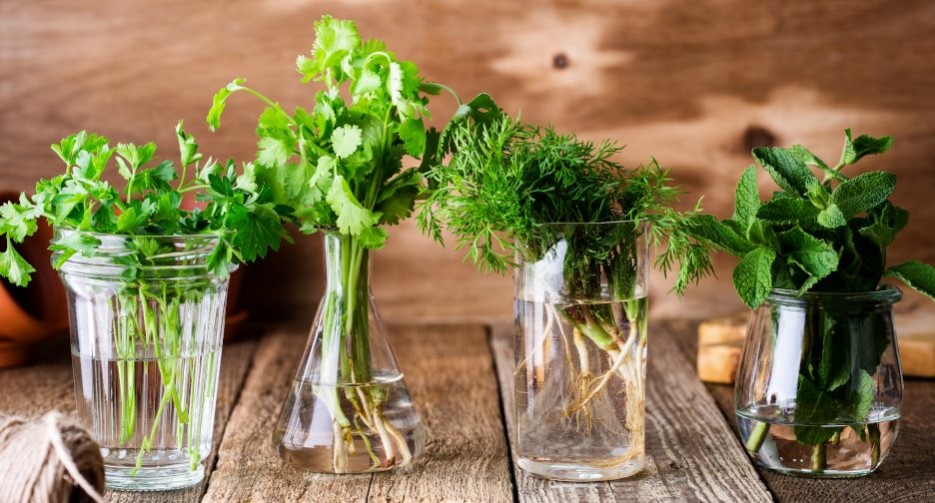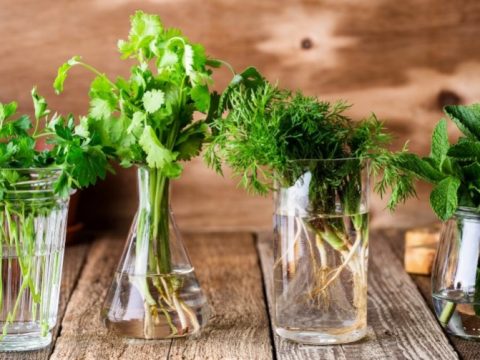How to Keep Herbs Fresh for Longer
What would soup be without parsley or lovage? Or peas without dill? Or pasta without basil?
Fresh herbs are essential in any kitchen. They bring depth and aroma to every dish. Beyond classic garden herbs, modern kitchens are increasingly embracing thyme, coriander, basil, rosemary, and more.
Why Herbs Matter
Herbs can revolutionize how you cook if chosen well and paired creatively. Mastering the use of herbs allows you to elevate even the simplest dishes into gourmet experiences. They’re a constant source of inspiration and a simple way to cook more creatively.
Why Herbs Wilt
Just like flowers, herbs wilt quickly without proper care. While some plants love sunlight, herbs like parsley and dill thrive in cool, humid, and dark environments. Sunlight and too much oxygen can yellow or blacken the leaves and affect flavor.
Low humidity dries herbs out, while excessive moisture encourages rot. If you wash herbs after buying, dry them thoroughly on paper towels before storing. For packaged greens, line a container with paper towels and transfer the leaves in—this method can keep them fresh for over a week.
How to Store Fresh Herbs
Trim the stems slightly and place the herbs in a glass or jar with water. Store them in the fridge, away from direct light and other foods. Change the water every 1–2 days, just like you would with flowers, and re-trim the stems as needed.
Use this method for soft-leaf herbs like:
- Parsley
- Dill
- Lovage
- Mint
- Basil
- Coriander
Woody herbs need a different approach:
- Rosemary
- Thyme
- Oregano
- Sage
Wrap them in a paper towel and place in a container or plastic wrap. Store in portions based on how often you use them.
Grow Herbs at Home
For year-round freshness, grow herbs in pots—even indoors. All you need are seeds, special soil, pots or planters, and organic fertilizer. You can even buy ready-to-use herb pots or plant your own seeds.
Upgrade with a smart planter equipped with grow lights, water reservoirs, and nutrient systems—perfect for forgetful gardeners.
Growing Tips:
- Use high-quality soil and certified organic fertilizer.
- Choose larger pots with drainage holes.
- Avoid direct sunlight; indirect light is ideal.
- Harvest mature herbs regularly to encourage regrowth.
Herbs like parsley and mint regenerate continuously, so you can harvest as needed. Growing herbs is not only practical but also relaxing and a fun family activity.
Freeze Your Herbs
Freezing preserves herbs’ nutrients and flavor while saving you time. Buy herbs in bulk during the season from trusted sources, soak them to remove impurities, chop and portion them before freezing.
Whenever you cook, just grab a handful from the freezer. They taste just as good as fresh—and are incredibly convenient.
Creative Uses for Fresh Herbs
Don’t stop at using parsley in soups and dill in stews—herbs can do so much more:
- Green Sauce: Blend parsley, garlic, lemon juice, salt, pepper, and olive oil. Add sour cream or cheese, basil, chili, or olives for variety.
- Homemade Pesto: Mix basil leaves, garlic, pine nuts, grated parmesan, olive oil, salt, and pepper. Adjust texture and taste to preference.
- Herb Marinades: Soak meat in a mix of balsamic vinegar or soy sauce, olive oil, garlic, lemon juice, and herbs like parsley, oregano, sage, and thyme.
These blends last up to 2–3 weeks in the fridge, except those with dairy.
Use Herbs in Cocktails Too
- Hugo: Prosecco, elderflower syrup, sparkling water, lemon slices, and fresh mint.
- Herbal Gin: Gin, rosemary sprigs, lemon juice, honey, and soda water.
- Mint & Basil Mojito: Rum, basil leaves, blackberries, lime juice, and crushed ice (sweetener optional).
Every herb can inspire new culinary adventures. Explore new flavors, experiment freely, and create a lifestyle that’s delicious, healthy, and fun.


